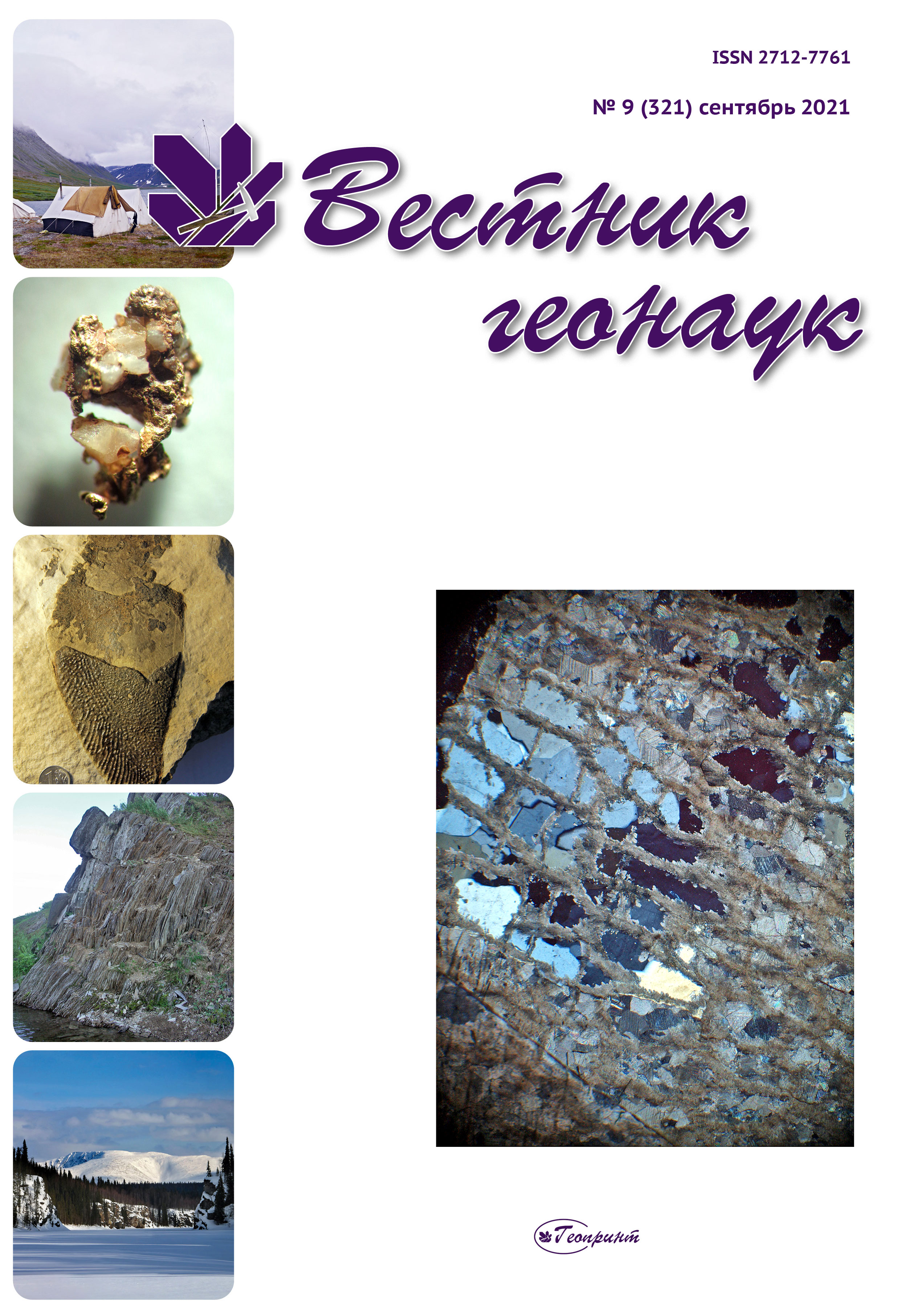First results of complex studies of modern microorganisms
by physico-chemical and mineral-geochemical methods
V. I. Silaev, A. V. Kokin, N. V. Pavlovich, S. N. Shanina,
D. V. Kiseleva, E. A. Vasiliev, O. V. Martirosyan,
I. V. Smoleva, V. N. Philippov, A. F. Khazov, A. S. Shuisky,
T. N. Schemelinina, G. V. Ignatiev, A. V. Slyusar
DOI: 10.19110/geov.2021.9.1
We studied 14 samples of gram-negative and gram-positive bacteria, unicellular yeasts and green algae using optical, atomic force and analytical scanning electron microscopy, thermal analysis, gas chromatography, infrared spectroscopy, inductively coupled plasma mass spectrometry and isotope mass spectrometry. In shape, the cells of microorganisms vary from rod-shaped to lenticular and coccoid, in size they range from mesonanometer to micrometer. A strong positive correlation was found between the extreme cell sizes. An admixture of inorganic chemical elements — Mg, Ca, Ba, Na, K, Cu, Zn, P, S, Cl and submicron-sized precipitates of mineral phases — carbonates, phosphate sulfates, hydrogen sulfate phosphates, hydrogen phosphates, halite, kaolinite, was found in the chemical composition of the studied microorganisms, metal alloys of brass composition, baddeleyite. Among the 45 microelements identified in microorganisms, there were 7 essential elements (E), 17 physiogenically active (FA) and 19 abiotic (AB). The total concentration of trace elements ranged from 0.003—0.26 wt. %. The value of the essential coefficient — E / AB — averaged 196 ± 153. Microorganisms were characterized by a mixed fat-protein elemental composition, they contained 14 amino acids belonging to the aliphatic, aromatic, basic, acidic, hydroxyl, imino and sulfur-containing groups. The total amino acid content ranged from 409 to 942 (682 ± 221) mg/g. Up to half of the amino acids were represented by the left (L) and right (D) enantiomers. The degree of racemization (D / L) ranged from 0.01 to 0.37. Yeast and chlorella were characterized by the most isotopically heavy composition of carbon in combination with relatively isotopically light nitrogen. In bacteria, a statistically lighter carbon was found in combination with a much heavier nitrogen. According to a number of properties — the chemical composition of organic matter, microelements, the degree of enrichment with antibiotic elements, the content of amino acids and the degree of their racemization — gram-negative and gram-positive bacteria differed. In general, the studied biological microorganisms were fundamentally different from the abiogenic organic substances found in meteorites and products of modern volcanism regarding their elemental and amino acid composition, carbon and nitrogen isotopes.
Keywords: multidisciplinary research, bacteria, unicellular yeast, chlorella, microstructure, chemical and amino acid composition, trace elements, isotopic composition of carbon and oxygen, abiogenic organic matter in meteorites and products of modern volcanism.
 Download full text Download full text
|
3—33
|
From minerals to new materials. Priorities
in the production of materials in the 21st century
A. M. Askhabov
DOI: 10.19110/geov.2021.9.2
The characteristic features of the search, production and engineering of new materials in modern conditions are considered. We discuss the change of paradigm in materials production, associated with the transition from experience-based production of materials to the task-oriented production of materials based on knowledge and new technologies. The current agenda of innovative materials science includes “smart” materials and nature-like technologies. Nanotechnology has become a reality, capable of controlling and operating matter and processes on the nanometer scale. The priorities of the new stage of production (creation) materials are indicated.
A great leap forward is expected in the following directions: 1) application of new nanotechnological concepts suggesting direct influence and action on separate atoms; 2) creating “smart” materials, materials — devices, materials — machines; 3) discovering, forecasting and design of new material absent in the nature; 4) producing materials under extreme conditions and for extreme conditions; 5) producing bioorganic materials and materials reproducing living matter; 6) developing so-called nature-like technologies.
Keywords: mineral-based materials, innovative materials, nanotechnology, material creation, materials of the future.
 Download full text Download full text
|
34—38
|
Unknown letter of L. A. Popugaeva from the archive
of Professor D. P. Grigoriev
Yu. L. Voytekhovsky
DOI: 10.19110/geov.2021.9.4
The article publishes previously unknown documents about L. A. Popugaeva from the personal archive of Professor D. P. Grigoriev, stored in the Commission on the History of the Russian Mineralogical Society: her letter from Nyurba dated August 5, 1956, a letter from VSEGEI with a request for guidance of a graduate student L. A. Popugaeva, a letter from CNILKS with a request for consultation signed by L. A. Popugaeva herself, as well as agendas for meetings of the Mineralogical Society and dissertations on the diamond problem. All documents are original, attributed and chronologically correlated with previously published documents. They are very valuable for the history of mineralogy as actual evidence of distant events. First of all, the documents mark the main stages of the life and scientific activity of an outstanding geologist, the discoverer of indigenous diamonds in Yakutia, L. A. Popugaeva. Secondly, they show her activity in the last professional field — the study of gemstone raw materials of the North-West Russia, mainly the Kola Peninsula. The article is dedicated to the date of the untimely death of L. A. Popugaeva.
Keywords: L. A. Popugaeva, D. P. Grigoriev, Nyurba, VSEGEI (All-Union Geological Institute), VNIIyuvelirprom (Institute of Jewelry Industry), CNILKS (Central Laboratory of Research of semiprecious stones), semi-precious raw materials.
 Download full text Download full text
|
45—51
|













